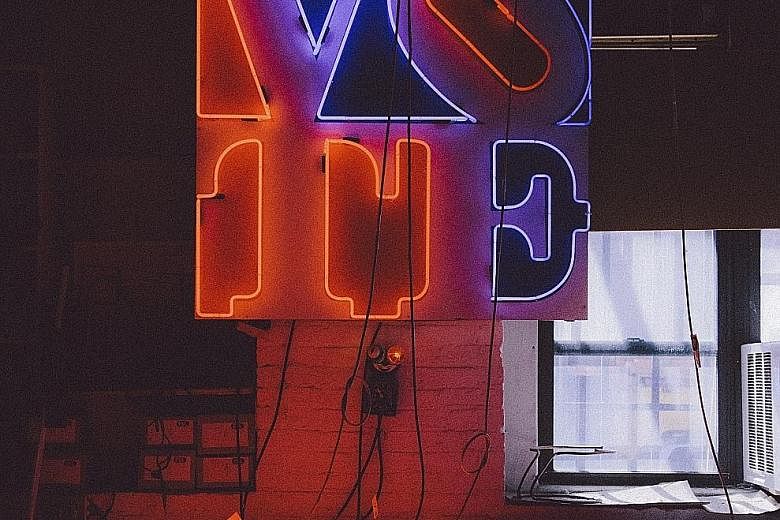NEW YORK • Last year, handbag and accessories company Coach, needing a new sales glow, hired Lite Brite Neon Studio to create a 1.8m-tall pink Tyrannosaurus Rex for its store in Manhattan.
That brightened up the day for Mr Matt Dilling, who has run Lite Brite for almost 20 years. In the past, his clients merely wanted to light up their logos which, to him, was boring and lacked appreciation for the medium's creative potential.
But neon is now taking on a fresher, vibrant luminosity, with cities even using the distinctive light to lure shoppers and diners to once-deserted downtowns.
Mr Dilling believes that, a few years ago, a design like the T.Rex's would have been unthinkable for a legacy brand such as Coach. But recently Tiffany & Co and Fendi, among others, have also seen the light and hired Lite Brite to help them liven up their images.
"If you're Coach, how do you remarket yourself?" he said. "I mean, you make leather handbags. You have to think of something that cuts through the visual clutter and neon definitely cuts through."
But even as fashion brands are using neon to showcase their modernity, they are also hoping to invoke nostalgia.
While installing a cascading neon rainbow in Stella McCartney's store in New York, Mr Dilling overheard multiple shoppers mention its "retro" quality.
Tiffany, too, has taken up neon to try to reclaim some of its mid-century irreverence. In the 1970s, for instance, its celebrated window designer Gene Moore created a neon-lit Chinese food container spilling diamond-encrusted pendants instead of noodles.
This autumn, Tiffany's Fifth Avenue windows display a neon-orange Don't Walk hand wearing an engagement ring. Argon with a dash of mercury naturally shines blue, while neon is naturally "motel sign" red.
These are the classic colours that first arrived in the United States from Paris in the early 1920s and replaced the pointillist incandescent "spectaculars" that dominated city-centre marquees.
"Whatever you could do with light bulbs, you could do in bigger, better, clearer ways with neon tubes," said Mr Eric Lynxwiler, a preservationist and historian at the Museum Of Neon Art in Glendale, California. "Every business in the nation that wanted to be perceived as modern in that Art-Deco era had to have neon."
Neon has also become central to urban renewal projects in Los Angeles and San Francisco. In Oklahoma City, its downtown, from the 1920s to the 1950s, was home to 52 car dealerships, many of them neon-lit.
After decades of urban decline and the devastation of the 1995 bombing, civic and business leaders in Oklahoma City sought to develop that old stretch of "Automobile Alley". This included grants for new businesses to hang neon signs.
"We felt like it could be a very important movement to help us regenerate the neighbourhood," said Mr Rand Elliott, chairman of the Automobile Alley Association's design committee.
To date, 29 businesses have hung neon on the six-block stretch of Broadway, including a massive 7.3m-by-7m reproduction of the original Buick sign, which was installed in 2014.
"Each sign is distinctive," Mr Elliott said. "It's like art hanging on these buildings."
NYTIMES

